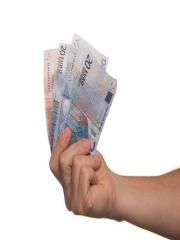De Beers – the world’s largest miner and diamond supplier – may be heading for a depletion in sales this year. According to its marketing arm Diamond Trading Company (DTC) a “slowdown” is expected in the second quarter,” but there is hope that the industry in India will increase by 20 percent, according to Varda Shine, the company’s CEO. That would be good news if not being compared to the growth there last year which reached 31 percent. India is the world’s largest diamond exporter so this fact of course will impact a company like De Beers.
Of course, this data is only just estimates and forecasts and thus not even close to 100 percent accurate. Shine is still hoping for “a double digit growth in this industry in India and China as well every year.” In addition, DTC prices have increased significantly – more than 300 percent following the 2008 economic crisis. One diamond trader who chose to remain anonymous pointed out that “it has increased by an average by 15 per cent to 20 per cent during the first quarter, following a rise of 27 per cent through the whole of 2010, while sales increased by 10 per cent to approximately $1.75 billion during the three months.”
So perhaps after all despite some figures pointing somewhat to the contrary, diamonds will remain a girl’s best friend in the future. In addition, since there are so many different figures and opinions, it is almost impossible to predict the future of the industry.

 Pringles – the yummy crunch savory snack – has been sold to Diamond Foods for a staggering $2.35 bn. Diamond is already pretty hot stuff in the snack business though, with ownership of the Kettle chips brand, Diamond of California and Emerald nuts brands and microwave popcorn brand Pop Secret.
Pringles – the yummy crunch savory snack – has been sold to Diamond Foods for a staggering $2.35 bn. Diamond is already pretty hot stuff in the snack business though, with ownership of the Kettle chips brand, Diamond of California and Emerald nuts brands and microwave popcorn brand Pop Secret.